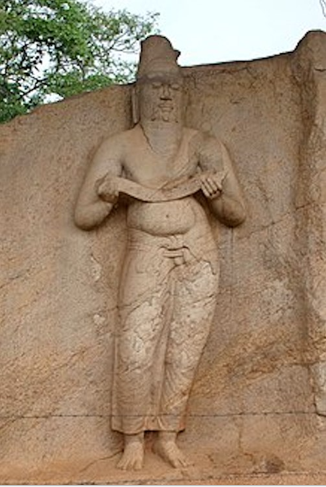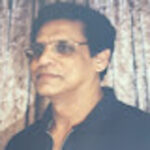ANCIENT SRI LANKAN ENGINEERS AND ARTISANS – By Dr Tilak . S Fernando
Ceylon Today on 29 December 2022

 This article is based on our forefathers, excellent engineers and artisans with exceptional skills. How many of our present generation is conversant with Sri Lanka engineers’ activities in the bygone years who have amazed the whole world?
This article is based on our forefathers, excellent engineers and artisans with exceptional skills. How many of our present generation is conversant with Sri Lanka engineers’ activities in the bygone years who have amazed the whole world?
During the remarkable Parakramabahu reign, the construction of the tallest buildings commenced. King Mahasen also did the most significant structures. The world’s first hospital was constructed during BC 367- 437 during King Pandukabhaya’s reign. No wonder foreigners became dumbstruck when these were built between the second and fourth centuries using metal veins.
Sri Lankan ancestors created Palaces following the ancient masterpieces of Ramayana during the Ravana epoch. During the Gampola era, Sri Lankan forefathers produced the world’s first pair of spectacles, a unique design known as ‘ Diyatrippu.’ Wood carving craft came up during the Ravana epoch. According to Ramayana, Sri Lankan ancestors designed aeroplanes during the Kingdom of Ravana. ‘Dandumonara’ was a typical example before the Wright brothers invented the plane in 1903.
Sigiriya is today well known as one of the world’s wonders. The history of Sigiriya goes back to King Kasyapa’s epoch. The King built a Palace on an ancient rock, and today it has become the most historical place in Sri Lanka. It is popular because of the ‘Lion’s entrance’, the verses written on stone, the mirror wall, and old pictures drawn on rocks are preserved to date. The top of the rock has been converted into an ancient Palace. Numerous water sprinklers spread through pipes in the waterpark attract visitors. Usually, these sprinklers operate during the rainy season.
Steel Industry
In ancient Sri Lanka, steel technology was widespread. Artisans made high-quality steel by melting iron and using up to 70-degree wind power and the heat-suction method. 4th, ‘Buwaneka Bahu King’, who captured the Gampola Kingdom, suddenly went blind. When the King could not see anymore, an ancestor of the Royal family (Gunasoma) invented a pair of ‘Dithareppu’ spectacles for the King. It took only nine days for Gunasoma to manufacture Dithareppu spectacles. These spectacles had a cooling effect on the eyes, and anyone who used those ‘specs’ would not suffer from cataracts, It was said. ‘Reading glasses’, in general, became popular in the 16th century in Europe.
Sri Lankan forefathers were versatile in many ways. They were involved with ‘thunder’ technology too. They invented a unit named ‘Wajra Chungbatta’ to protect the Gem at the peak of the historical Stupa at Ruwanweli Seya. Jetawanaramaya and Abayagiriya followed next. Sri Lankan irrigation was usually done at the base of waterfalls. Sri Lankan forefathers took pride in art management and developed a colossal technical civilisation.
Mahaweli Excavation.
When foreign engineers built the Mahaweli project recently using modern and up-to-date satellite technology for excavation, they experienced a technical setback in constructing a dam in Maduru Oya. Suddenly, they came across a dam built during the Anuradhapura epoch. At the opening ceremony of the Maduru Oya waterway, foreign engineers paid the highest tribute to Sri Lankan forefathers, who had created a barrier many centuries ago. They wondered how Sri Lankan ancestors managed to create a dam using their (ancestors’) ancient techniques! Foreign engineers were naturally flabbergasted when they saw Sri Lankan forefathers creations.
Ancestral engineers created gigantic reservoirs such as the ‘Maha Parakramabahu Samudra’. Moreover, when King Parakramabahu built this reservoir, he urged his subjects ‘not waste a single drop of water that falls out of the skies but make use of every drop rather than allowing it to flow into the ocean”. Our forefathers created the most superior water management systems in 1155. During this period, there were 4,000 waterways, and irrigation technology became a vital feature to befit the dry zone as new development.
Sri Lankan engineers – built Yoda Wewa as a supreme technological design. They designed a unique structure to prevent water overflow from lakes named the ‘Bisokotuwa’. No country has a gradient of one inch to a mile for drainage.
They built the world’s first multi-storey building at ‘Lowamahapaya’ during the King Dutugamunu era, which was an abode for Buddhist monks and consisted of nine levels. It had a length of 400 ft and a width of forty stone pillars. On the first floor, it contained 1,600 stone pillars. Its roof was made out of copper sheets.
Sri Lankan ancient engineers constructed the first hospital in the world in Mihintale, Anuradhapura and Medagiriya. Jetawanaramaya dagoba was built with burnt bricks to a height of 120 metres, which is regarded as the highest stupa globally.
The majority decision
The majority of the people believe that the advancement of the world took place in the West! Nevertheless, Sri Lanka had a much more advanced civilisation when the western civilisation was in the ‘crawling’ stages. Many folks keep admiring and flattering the West because they cannot realise what a great nation Sri Lanka has been! Suppose Sri Lankans wish to pave the way for the future generation as an independent, self-sufficient and advanced nation; Lankan should have the fortitude to realise how Sri Lanka was conquered by every foreign power and plundered all Sri Lanka’s assets.
Our forefathers created craftsmanship in both Wood and Stone. The unique design that remains so far is ‘Sandakadapahana’ amongst the present generation. Sri Lankan forefathers had travelled by air and also communicated with the Universe! Today the Universe has become the vogue among folks, especially with astrologers and future predictors. There are so many holy men and women today who seem to communicate with the Universe. They do come out with the fact that the Universe has been furious with humans for years because the present generation pays no heed to nature!
Every reader of this column will be able to fathom the talent Sri Lankan forefathers possessed just by looking at or visualising the ruins of the Anuradhapura and Polonnaruwa era and gazing at the gigantic stupas. It is hard to know how our forefathers got the symmetricity of buildings and massive constructions such as stupas. Wonder whether they had unique equipment to measure!
tilakfernando@gmail.com.







